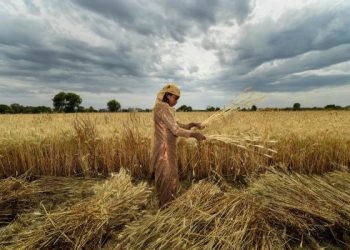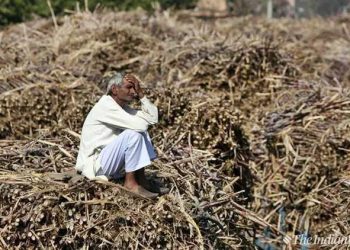TAD News Desk, New Delhi: A section of the huge Indian populous struggles to meet the daily requirements of nutritious foods and, they consume daily staple foods to meet the energy requirements and to prevent hunger. This lack of nutrition leads to many disabilities such as, stunting, impaired cognitive ability, blindness, increased risk of disease and in some cases even premature death. Children suffer most from malnutrition as they are susceptible to many diseases and are mentally and physically stunted for life.
WHO says the diet of poor people in developing countries lack micro nutrients – Vitamin A, Zinc and, iron. Almost 2 billion people in the world lack micronutrients. Biofortified crops are the solutions to these problems where there is strong health and market infrastructure. It won’t yield anything in rural regions where the most of the malnourished population reside. United Nations report points out that, 4 out of 10 children in India are stunted or suffer chronic nutrition. Current dietary practices of poor do not offer nutritious elements at affordable prices resulting in these chronic conditions of malnourishment.
Recently, there were 17 biofortified varieties of 8 crops developed which offer threefold nutrition value. Indian Council of Agricultural research has developed 53 such varieties in last five years. Prime-minister has dedicated these crops to the nation. There is an emphasis on villages to render themselves into nutri-smart villages to enhance nutritional security and KVKs also promote development of location specific nutrition-garden models to make nutrients – micro and macro, locally available.
The rice variety CR Dhan 315 has high zinc; wheat variety HI 1633 rich in protein, iron and zinc, HD 3298 rich in protein and iron and DBW 303 and DDW 48 rich in protein in wheat; Ladhowal Quality Protein Maize Hybrid 1, 2 and 3 rich in lysine and tryptophan; CFMV1 and 2 of finger millet rich in calcium, iron and zinc; CLMV1 of little Millet rich in iron and zinc; Pusa Mustard 32 with low erucic acid; Girnar 4 and 5 of groundnut with enhanced oleic acid and yam variety Sri Neelima and DA 340 with enhanced zinc, iron and anthocyanin content.
Government plans to scale up the production of biofortified crops and link it with programs such as of Mid-day meal and anganwadi to tackle the issue of malnourishment. The production would simultaneously open doors for new earning avenues for farmers and entrepreneurship involvement.









